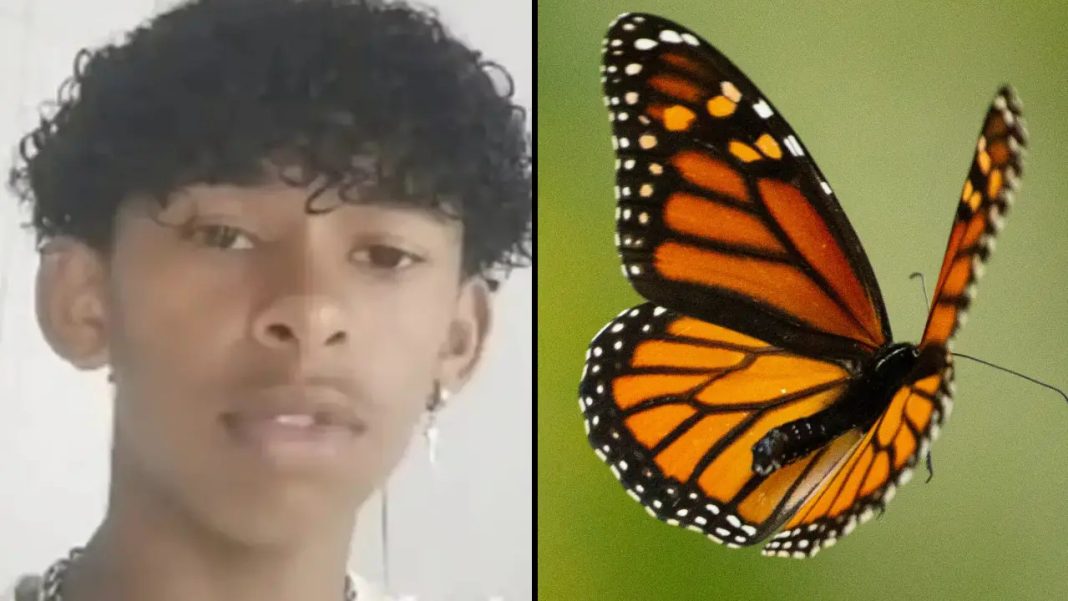Tragic Death of a Teenager Linked to Dangerous Online Challenge
In a deeply unsettling incident that has profoundly shaken communities and raised alarms about the potential dangers of social media challenges, a 14-year-old boy named Davi Nunes Moreira tragically lost his life after allegedly injecting himself with a crushed butterfly in Brazil. This event is not an isolated one; it is part of a broader conversation surrounding the risks associated with viral online trends that entice young people into potentially life-threatening behavior. As social media platforms continue to evolve, the implications of such trends on youth behavior cannot be overstated.

The Incident: A Slow and Painful Demise
Davi, hailing from Planalto, Brazil, experienced a harrowing seven-day hospitalization where he battled severe health complications stemming from his actions. Initially, the teenager misled his father by claiming he had sustained an injury while playing; such was the stigma and fear associated with admitting to risky behavior influenced by the internet. However, as his health deteriorated, he finally revealed the shocking truth about the butterfly injection. This monumental admission came only after he was already facing significant medical challenges, showcasing the troubling landscape of peer influence and digital trends.

Despite undergoing specialized medical treatment that included intensive care, Davi’s condition worsened to the point where doctors were unable to intervene effectively. Hospital staff attempted various procedures and tests, but the situation was dire. The official cause of death remains until now unknown, prompting the Civil Police of Bahia to initiate an investigation. According to a police spokesperson, “The autopsy results will help clarify the cause of death. The investigation is designed to clear up what happened.” The uncertainties surrounding Davi’s demise leave a heavy weight on the hearts of his family and the broader community.
Understanding the Injection and Its Consequences
Local reports indicate that Davi injected a concoction made from a dead butterfly, believing it to be part of a bizarre social media craze. After the injection, he began experiencing alarming symptoms such as vomiting and limping, which were clear indicators of distress. It was only after a life-altering situation transpired that Davi’s father discovered the syringe hidden under his son’s pillow while cleaning—an unsettling find that would later lead to a deeper investigation into the teen’s tragic choices and the influence of online daredevilry.
Doctor Luiz Fernando D. Relvas, speaking to the news outlet VivaBem, noted that the boy’s demise could be attributed to “an embolism, an infection, or an allergic reaction.” He emphasized the medical risks involved with injecting foreign substances, pointing out that the method in which the butterfly mixture was prepared and the size of the fragments introduced into Davi’s bloodstream were crucial in determining the outcome. “There may have been air left inside, which could lead to an embolism,” he explained. This insight into the medical ramifications raises further awareness of how such impulsive actions can quickly spiral into catastrophic events.
The Role of Social Media in Influencing Behavior
The internet has undeniably become a double-edged sword, providing both valuable information and dangerous trends. Reports suggest that Davi may have been influenced by an online experiment he encountered, a claim he denied to medical staff before his death, possibly due to shame or fear of judgment. This denial raises profound questions about the pressure teens face to engage with challenges that can have dire consequences, underscoring the urgent need for parental guidance and open discussions about digital experiences.
Professor Marcelo Duarte, a butterfly expert and director of the Zoology Museum at Sao Paulo University, weighed in on the potential hazards of such actions, stating, “Butterflies have a complex biology, and the fluids present in their bodies have not been studied in depth in terms of their toxicity to humans.” His statement underscores the lack of understanding regarding the biological makeup of butterflies and the inherent risks involved in injecting substances derived from them. This highlights a critical gap in both scientific knowledge and public awareness of the consequences that can arise from experimenting with nature in a reckless manner.
Broader Implications and Community Reactions
This tragic incident has ignited a dialogue about the role of parents, educators, and social media platforms in protecting children from harmful challenges. Mental health professionals and community leaders are emphasizing the importance of active engagement between parents and their children. They advocate for open conversations about the pressures of social media and how to critically assess the risks associated with viral trends. Davi Nunes Moreira’s tragic fate serves as a stark reminder of how quickly things can go wrong when young individuals are not equipped with the knowledge necessary to navigate online environments safely.
Community workshops focused on digital literacy and safety are being proposed as potential solutions, aiming to educate both parents and children about the dangers posed by internet trends. As the digital landscape evolves, the need for proactive measures to ensure children’s safety in their online interactions becomes imperative. Educational campaigns that can convey the importance of critical thinking and proper understanding of online challenges are essential in preventing further tragedies.
Conclusion: A Call for Awareness
The story of Davi Nunes Moreira is a heartbreaking example of the potential dangers inherent in social media trends. As authorities continue to investigate the circumstances surrounding his death, the incident highlights the urgent need for a concerted effort to educate young people about the consequences of risky behaviors promoted through various online platforms. It is imperative for society to come together—parents, educators, and influencers alike—to foster a safer online environment for future generations. Together, we can work towards ensuring that our children are safe from the hazards that come with the digital age.
If you wish to stay informed about similar stories and the latest trends influencing youth behavior, consider subscribing to trusted news sources. Knowledge is power, and understanding the implications of online influences can help save lives. In a world where the lines between reality and online challenges blur, it is our collective responsibility to safeguard the innocence and well-being of our children.

















